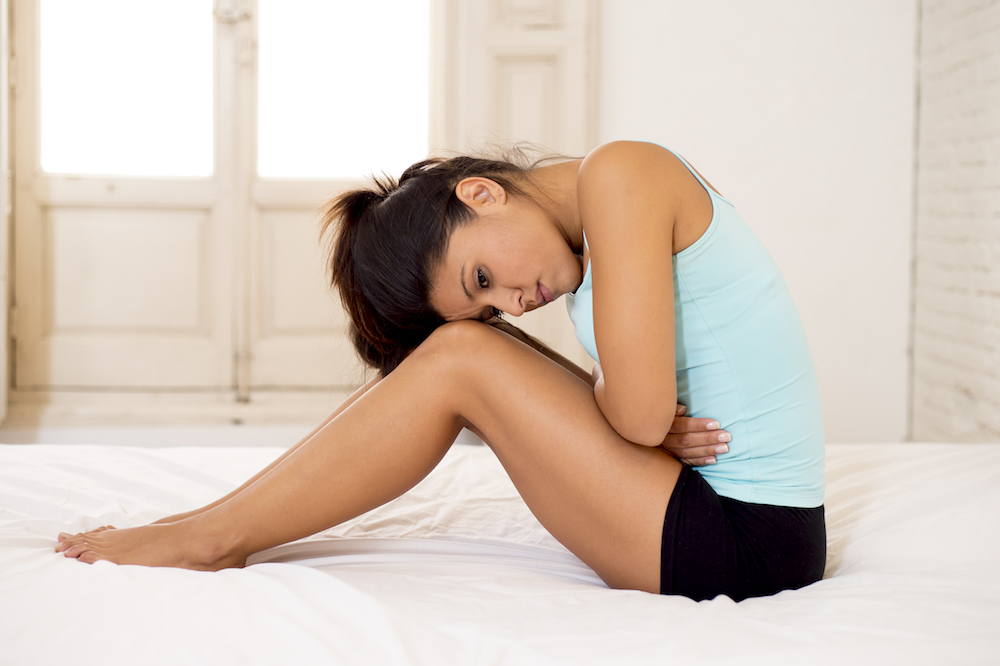
Do you have severe abdominal pain? You could have gallstones. Learn more about the signs and symptoms.
Tucked beneath your liver, the gallbladder is a seemingly inconsequential organ that stores bile from your liver. When this bile passes to your small intestine, it helps digest fatty foods. However, when gallstones occur, the pain can be debilitating.
1. What are gallstones and their symptoms?
Gallstones form when small bits of crystalized bile clump together. These stones can be as small as a grain of salt or as large as an egg. When they stay put in the gallbladder, these “silent” gallstones go unnoticed and do not require treatment. When they try to pass through the tiny bile duct to the small intestine, inflammation and severe pain set in. Lasting from a few minutes to a few hours, the pain can feel like indigestion or similar to a feeling of fullness.
Additional symptoms include:
- Severe abdominal pain, with no relief from pain relievers
- Pain that worsens after eating a meal, particularly foods high in fat
- Chest pain
- Excessive gas and heartburn
- Tenderness in the abdomen, especially on the upper right side
- Jaundice
- Nausea
- Pancreatitis
“While pain can be a symptom of gallstones, it’s important to know that they often manifest as more of a vague discomfort rather than pain,” says Hector C. Ramos, MD, a hepatobiliary and pancreatic surgeon at Keck Medicine of USC. “They’re most often found when a primary care doctor does an ultrasound, because a patient comes in with what they believe to be indigestion or abdominal distress.”
2. Who is at risk for gallstones?
Gallstones have become increasingly common, and all age groups can be affected.
Factors that contribute to gallstones include:
- Obesity
- An increase in estrogen, from pregnancy or hormone therapy
- A diet high in fat and refined carbohydrates, and a decrease in fiber
A family history of gallstones, as well as multiple pregnancies, can increase risk. Likewise, there is a higher percentage in older people; up to 20% of American women by the age of 60 will develop them.
3. How are gallstones treated?
An X-ray, CT scan or ultrasound will confirm whether you have gallstones. If you don’t have any symptoms, most likely you’ll simply live with them, until you do. After treating your gallstones, changing to a vegetarian diet or one that includes preventive factors, like polyunsaturated fat, monounsaturated fat, fiber and caffeine, is suggested.
“A vegetarian diet will prevent gallstones,” Dr. Ramos says. “However, if you have already been diagnosed with gallstones, it’s best not to change suddenly to a strict vegetarian diet. The rapid shift from the gallbladder being very active and frequently digesting fats to not being used at all can aggravate your condition and produce more gallstones. Crash-diet plans that cause a rapid loss of a great deal of weight can also produce or aggravate gallstones. If you’re considering weight management surgery, talk to your surgeon about the potential for gallstones.”
If your doctor decides to remove your gallbladder, a cholecystectomy might be suggested. For this procedure, a surgical incision is made, and then the gallbladder may be removed by laparoscopic surgery. Most patients experience a quick recovery with little pain and discomfort.
“Not all gallstones need to be surgically removed,” Dr. Ramos says. “Sometimes, a physician will find gallstones, when doing a procedure for kidney stones, for example. If they aren’t causing you symptoms, the gallbladder may not need to be removed. But if you have persistent pain, surgery is the best option. Patients who are immunosuppressed are also advised to get surgery, as gallstones can lead to a potentially fatal infection.”
4. Are there complications with gallstones?
Even if you aren’t in pain from your gallstones, they may still present a health risk. Jaundice, where your skin itches and appears yellow, is one side effect. Another is acute cholecystitis, where the stone blocks the cystic duct, preventing the gallbladder from emptying bile into the bile duct. Nausea, vomiting and severe pain are usually present. In the most serious cases, patients may develop acute pancreatitis, also treated with surgery. Usually, patients return to normal lives, after having their gallbladder removed.
“The best way to prevent gallstones is to eat a moderate diet that is low in fat and simple carbohydrates, such as sugar and refined flour,” Dr. Ramos says. “Obesity is associated with gallstones, so do your best to keep your weight in a healthy range. The best prevention is a moderate, balanced diet that is low in fat. Get your carbohydrates from fresh, whole fruits and vegetables. You should also drink lots of water to keep your bile fluid.”
Topics
